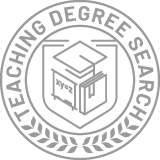2023 Best Teaching Bachelor's Degree Schools in Vermont
Today's teaching students have lots of options to pick from when considering higher education opportunities. Along with traditional schools that require in-person attendence, you can attend one of many reputable online schools. Some programs even offer a hybrid experience. Also, there are a number of trade schools and bootcamp with offerings that you might find attractive.
Along with in-depth profiles of schools and the programs they offer, Teaching Degree Search has created the Best Teaching Bachelor's Degree Schools in Vermont to help you in your search for the best school for you. This report analyzed 4 schools in Vermont to see which ones offered the best bachelor's degree programs for teaching students. To come up with a school's ranking, we analyzed numerous factors related to post-graduation wages, the quality of education offered by the school, average accumulated student debt, and more.
View our full ranking methodology.
Featured schools near , edit
Top Teaching Bachelor's Degree Schools in Vermont
Learn more about these excellent schools below:
Our analysis found University of Vermont to be the best school for teaching students who want to pursue a bachelor’s degree in Vermont.
The average in-state tuition and fees for students at UVM is $19,002. Those students who come from outside the state pay an average of $43,890. On average, bachelor’s degree students take out $21,077 in loans while pursuing their degree.
Online courses are available at UVM, but you will need to check with the school to see if they are available for your field of interest. Of all the undergraduates enrolled at the school during the 2019-2020 academic year, around 53% took at least some of their classes online.
The excellent bachelor’s degree programs at Saint Michael’s College helped the school earn the #2 place on this year’s ranking of the best teaching schools in Vermont.
Saint Michael’s does not offer a discount to in-state students, so the average tuition and fees for all undergraduates is $48,690. This amount may be reduced if you receive financial aid. By the time they get their bachelor’s degree, students from this school have racked up an average of $23,014 in student loans.
Some students may be able to take online classes at Saint Michael’s. Of all the undergraduates enrolled at the school during the 2019-2020 academic year, around 80% took at least some of their classes online.
Out of the 4 schools in Vermont that were part of this year’s ranking, Champlain College landed the # 3 spot on the list.
The average tuition and fees at Champlain is $42,984. In-state students do not receive a discount, however you may be able to reduce your price if you receive financial aid. By the time they get their bachelor’s degree, students from this school have racked up an average of $26,987 in student loans.
Online courses are available at Champlain, but you will need to check with the school to see if they are available for your field of interest. In fact, around 46% of the undergraduate population registered for at least one online class in 2019-2020.
Out of the 4 schools in Vermont that were part of this year’s ranking, Northern Vermont University landed the # 4 spot on the list.
In-state students pay an average of $12,804 in tuition and fees if they attend Northern Vermont University full time. Those students who come from outside the state pay an average of $26,892. By the time they get their bachelor’s degree, students from this school have racked up an average of $25,813 in student loans.
If you are interested in distance education, be sure to check with the school since Northern Vermont University does offer online classes for certain majors. During the 2019-2020 year, about 46% of the undergraduates at the school took at least one online course.
Best Teaching Bachelor's Degree Schools in the New England Region
View Best Teaching Bachelor’s Degree Schools Nationwide >
Notes and References
Footnotes
*These averages are for the top 4 schools only.
References
- Read more about our ranking methodology.
- The Integrated Postsecondary Education Data System (IPEDS) from the National Center for Education Statistics (NCES), a branch of the U.S. Department of Education (DOE) serves as the core of our data about colleges.
- Some other college data, including much of the graduate earnings data, comes from the U.S. Department of Education’s (College Scorecard).
- Information about the national average student loan default rate is from the U.S. Department of Education and refers to data about the 2016 borrower cohort tracking period for which the cohort default rate (CDR) was 10.1%.
More about our data sources and methodologies.
Featured Schools
 Request Info
Request Info
|
Southern New Hampshire University You have goals. Southern New Hampshire University can help you get there. Whether you need a bachelor's degree to get into a career or want a master's degree to move up in your current career, SNHU has an online program for you. Find your degree from over 200 online programs. Learn More > |


